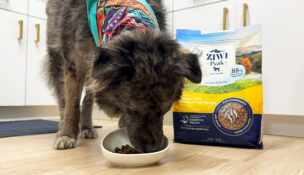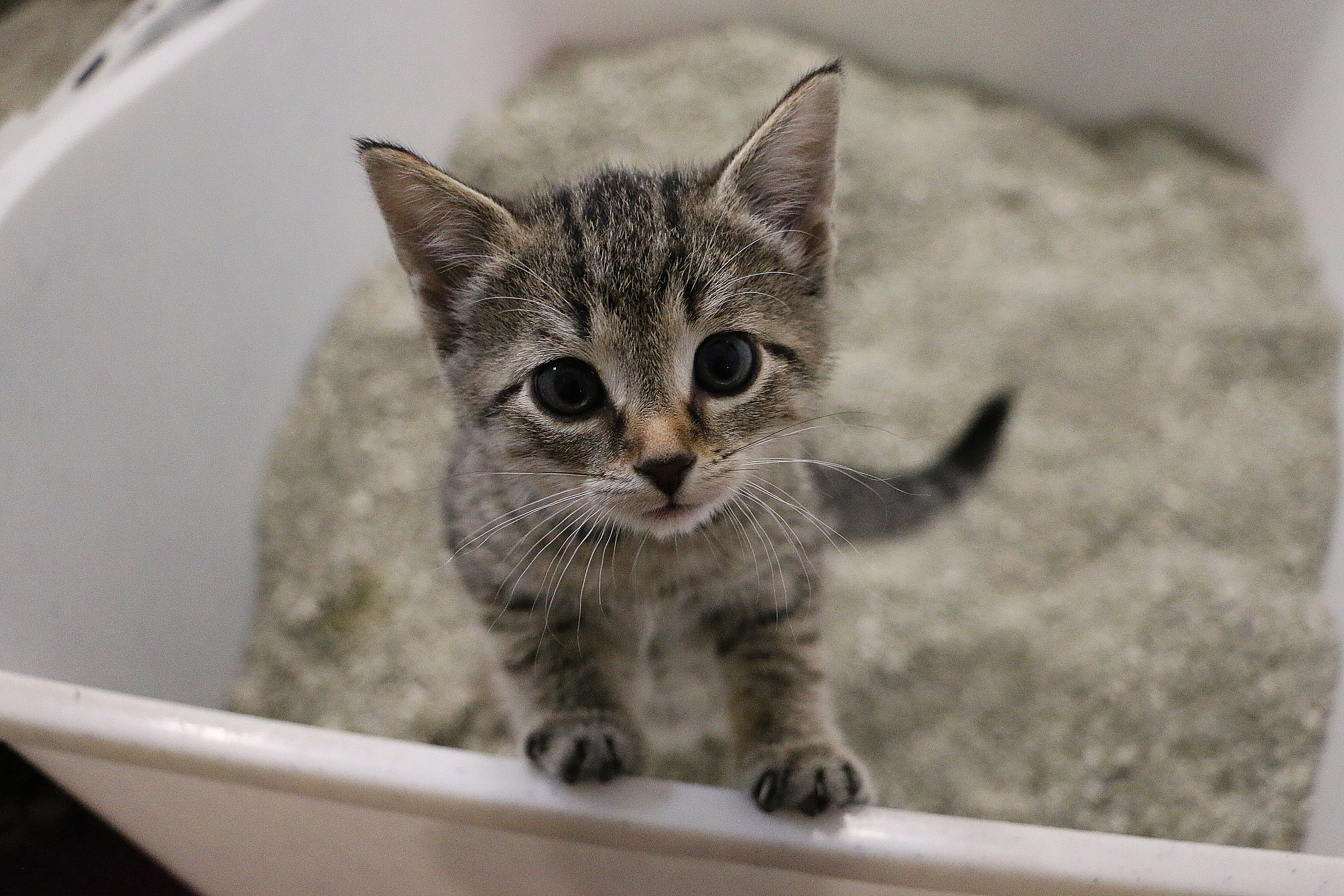Faster Better Stronger
Erik J. Martin //September 4, 2013//
Fido and Fluffy may not have Social Security to fall back on in their old age, but based on the growing supply of specialty pet foods and products geared toward elder pets, many can look forward to enjoying greater comforts in their later years.
Indeed, the market for senior dog and cat products is booming, and for good reason. Canines and felines are living longer lives, thanks to a stronger emphasis on proper diet and exercise, improved veterinary care and increased awareness and ownership of aging pets. Smart retailers with good merchandising savvy are in a position to cash in on these trends, provided they get up to speed on the latest products and respond effectively to the needs and demands of their customers.
Strength In Numbers
Guidelines from the American Animal Hospital Association indicate that a senior pet is a dog or cat that is in the last 25 percent of the predicted lifespan for its species and breed, which typically means 7 to 8 years old. The American Veterinary Medical Association reports that nearly 50 percent of U.S. households own a dog or cat older than the age of 6, up 6 percent and 7 percent, respectively, from 11 years ago, and 28 percent of dogs and 25 percent of cats are at least 8 years old. Additionally, 14.7 percent of dogs in U.S. households are 11 or older, according to a recent American Pet Products Association pet owners survey.
Further consider that the average lifespan for dogs and cats, respectively, is approximately 11 and 12.1 years, up 4 percent and 10 percent since 2002, as per the 2013 Banfield Pet Hospital State of Pet Health Report. In fact, the Humane Society of the United States reports that, since 1930, the average life expectancy of a cat has nearly doubled.
“With people getting older and paying more attention to their aging dogs, the average lifespan of a dog will only increase as well,” Matthys van Leeuwen, owner of Dutch Dog Design, Snoqualmie, Wash, manufacturer of dog bike trailers, strollers and beds, said. “And over that time, the need for pet products catering to the aging pet community will increase.”
Addie Schuhle concurs.
As the purchasing manager for Pet Food Depot in Phoenix, Ariz., Schuhle said she’s displaying more goods designed for older dogs and cats, including specialty feeds, toys and orthopedic beds.
“There are a ton of companies rolling out senior product lines and vying for space on our shelves, so I definitely think we’ll see an increase in demand going forward,” Schuhle said.
A New Lease On Longer Life
Published reports note that dog owners are spending over $19 billion on vet visits annually, and there is also a rise in pet insurance purchases, supporting the belief that the well-being of dogs is a priority for pet owners, Alyssa Guertin, associate brand manager for consumer animal products at Lambert Kay, Kansas City, Mo., said.
“And for (owners) looking for alternative options to euthanasia when confronted with terminal diseases, services such as chemotherapy for pets with cancer and drugs to prolong lifespan and slow disease advancement also contribute to the fact that pets are living longer,” Guertin said.
Susan Weiss, president of Naples, Fla.-based Ark Naturals, which manufactures the Gray Muzzle line of products aimed at senior dogs, says euthanasia is no longer a viable option for many owners, now that they can provide a better quality of life to their graying pets.
“Up until about six years ago, it was not unusual for vets to suggest that it was time to ‘put that pet to sleep,’” Weiss said. “Today’s conversation is more like, ‘what else can you do for my dog or cat?’ People nowadays are often willing to spend an extraordinary amount of money to keep their pets alive.”
Opportunity for Retailers
Joel Ehrenzweig, DVM, Kansas City, Mo., says it’s important for retailers to understand that today’s customers consider pets to be integral family members and want to be actively involved in the health of their pets.
“Products and services designed for the care of geriatric animals are having a significant upward impact on suppliers’ revenues,” Ehrenzweig said. “Retailers that ignore the senior pet population do so only at their own peril.”
A variety of aging pet formulas are available to retailers that are considering expanding their shelf set, especially in the food, treat and supplement categories, Guertin says.
“We will see an ever-growing market of senior-specific pet products and services, including supplements, toys, clothing, services, and safety and mobility items, as well as private label insurance, pharmacy and drug products and services, long-term care options, senior-trained service providers, flexible spending accounts, trusts and more,” Guertin said.
Barbara Amato, co-owner of A Pet’s Paradise, a pet store in Denver that specializes in carrying all-natural foods, can testify to this growth. Her shelves are stocked with a myriad of new items designed for elder dogs and cats, including healthy diet formulas and treats.
“There’s been a greater demand for these types of products because people are paying more attention to their pets’ health and nutritional needs,” Amato said. “We carry a lot of supplements for senior pets that are popular, as well as local products like an organic dog supplement made in Boulder, Colo., that includes mushroom and eggshell membrane.”
Different Needs
Surprisingly, only approximately 14 percent of senior pets receive regular health screenings as recommended by their vets, according to the American Animal Hospital Association.
And, a recent poll by Tufts University revealed that 84 percent of people surveyed believe older dogs should eat different than adult dogs, but only roughly half of them provide a senior diet to these older canines.
While stats like these are alarming, they indicate a golden opportunity for retailers to both educate shoppers about what their elder pets need and recommend specific brands carried on their shelves.
“Pet store owners should devote more time and knowledge to ensure that customers understand what senior pet products are available,” Amato said. “It comes down to proper training of employees and inquiring about shoppers’ needs when they’re in your store.”
Cristen Underwood, director of marketing for Quaker Pet Group, which rolled out its Silver Tails senior pet product division in 2010, agrees.
“The key challenge and opportunity for retailers is education,” she said. “It’s critical that retailers help pet owners acknowledge that their pets are aging, identify the changing physical and emotional needs of these pets, and make recommendations of products that will help improve the lives of these pets. Just as humans don’t like to think of themselves as aging, many pet parents don’t like to think of their beloved companions as seniors—getting consumers comfortable with the idea is key, as there are great product solutions today to address their evolving needs with dignity, innovation and comfort.”
Shelf-Worthy Suggestions
The top-selling non-food product for older pets at Petapoluza, a retailer in Seattle, is a dog harness, although owner Nick Zouroudis says he also sells his share of ramps to make getting in and out of the car easier.
“I have a smaller store, so I’m only able to carry some products geared toward aging pets, although I’m able to special order products for customers through suppliers and distributors,” Zouroudis said. “I definitely stock more of these (senior pet) items than I did when I opened 7 years ago, and I’m noticing a bit more demand for them lately.”
For retailers that have the space, Zouroudis advises dedicating a section of your store to elder pet products that are organized together.
“Endcap displays,” he said. “Can generate great interest for specialty items like these.”
Schuhle, on the other hand, likes to organize specialty products according to the particular ailment or need.
“The important thing is to listen to your customers and try to make navigating your store accommodating and convenient for them,” she said.



















